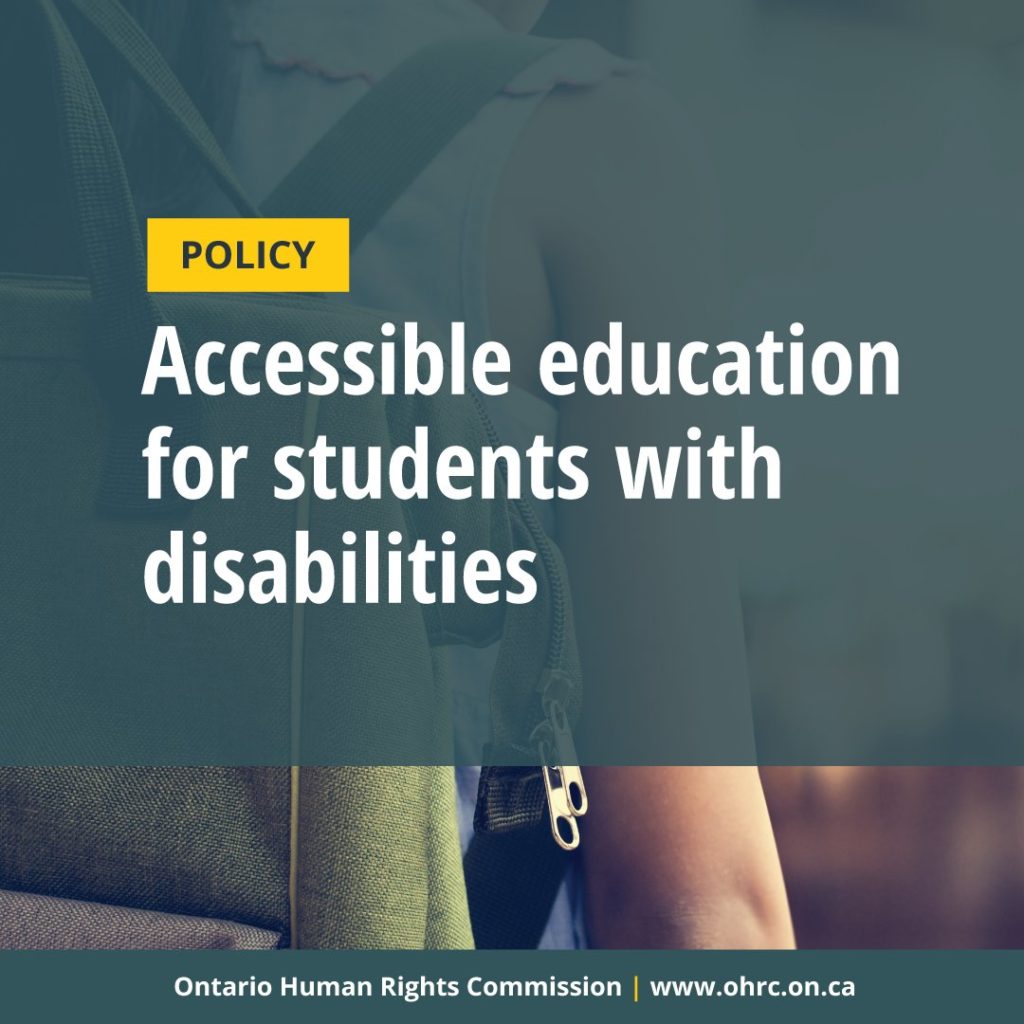 Director of Inclusive Education Canada, Dr. Gordon L. Porter, reflects on the Ontario Human Rights Commission’s new education policy “Accessible education for students with disabilities”.
Director of Inclusive Education Canada, Dr. Gordon L. Porter, reflects on the Ontario Human Rights Commission’s new education policy “Accessible education for students with disabilities”.
Read – Ontario Human Rights Commission: Accessible education for students with disabilities
The Ontario Human Rights Commission (OHRC) is giving it a second try. Last week they issued new Guidelines on inclusive education, “Accessible education for students with disabilities”. The Commission tried before in 2004. Many would argue that effort had little practical effect. Let’s hope it turns out better with this 2018 version!
The Guidelines are intended to motivate, or to nudge, Ontario schools to become more inclusive. It sets out their obligations under the Ontario Human Rights Code and other legal and legislative provisions. The goal is to ensure that schools provide students with disabilities and their teachers with the supports they need. Far too often, the province’s district school boards have failed to do so. The failure is documented in the recently released report “If Inclusion Means Everyone Why Not Me?” The report is the culmination of a year-long collaboration involving Community Living Ontario, Western University, Brock University, ARCH Disability Law Centre, Brockville and District Association for Community Involvement, and Inclusive Education Canada.
“The full inclusion of students who have an intellectual disability remains an unmet goal for our education system, even though school boards have clear obligations to ensure that students can fully access all the benefits of the education system,” said Luke Reid, report co-author and Staff Lawyer at ARCH Disability Law Centre.
The province’s 72 district school boards have not provided the policy framework nor the range of supports that are needed. The Guidelines can help address this failure.
But just to be clear, it is fair to ask if the 2018 edition of the Guidelines, will really make a difference. Will the education system respond as it should? Past experience is not encouraging.
The OHRC’s Guidelines – both the original 2004 version and the 2018 edition – are excellent pieces of work. The latest Guidelines set out the context for making schools accessible to learners with diverse needs. It described the principles and the practices needed to meet the requirements of the Human Rights Code. Most important, it sets out the implications of the “duty to accommodate” and defines “undue hardship”. The Guidelines suggests how schools can meet individual needs while ensuring inclusion. It examines both the systemic obstacles at play in Ontario schools and the challenge of meeting the needs of individual students.
But the question remains – Will the Guidelines really matter?
Our guess is they will only matter if the Ministry and individual district school boards accept the challenge and set out clear and effective expectations for themselves and then for Ontario schools. They have to ensure there is more than a nod to the mandate set out in the Guidelines. Leaders need to step up and demonstrate they are committed to actually changing school and classroom practices. They need to develop appropriate funding and accountability mechanisms.
Teachers and school principals in Ontario can meet the challenge – IF – they have the support to ensure that the new Guidelines actually matter. Families and students with disabilities are counting on it.

Dr. Gordon L. Porter,
Director of Inclusive Education Canada
